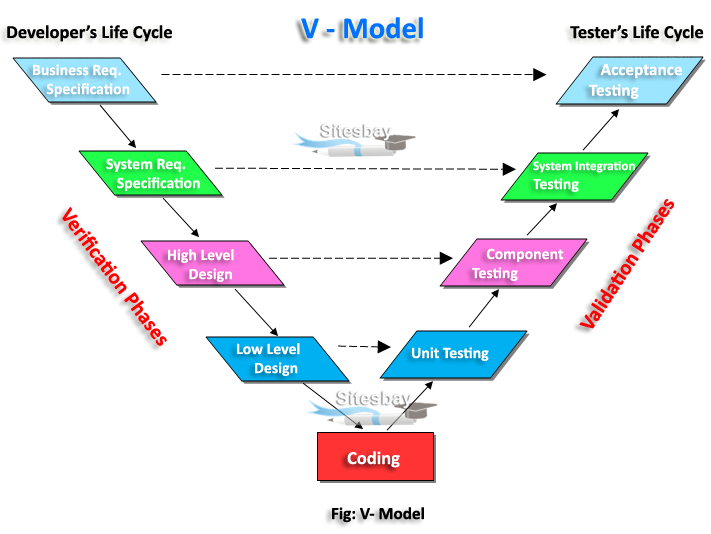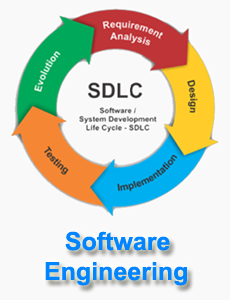V-Model in SDLC
V-Shaped Model in SDLC
V- Model is also known as Verification and Validation Model. In this model Verification & Validation goes hand in hand i.e. development and testing goes parallel. V model and waterfall model are the same except that the test planning and testing start at an early stage in V-Model.

The V-model is an SDLC model where execution of processes happens in a sequential manner in a V-shape. It is also known as Verification and Validation model.
V-Model - Verification Phases
(i) Requirement Analysis
In this phase, all the required information is gathered & analyzed. Verification activities include reviewing the requirements.
(ii) System Design
Once the requirement is clear, a system is designed i.e. architecture, components of the product are created and documented in a design document.
(iii) High-Level Design
High-level design defines the architecture/design of modules. It defines the functionality between the two modules.
(iv) Low-Level Design
Low-level Design defines the architecture/design of individual components.
(v) Coding
Code development is done in this phase.
V-Model - Validation Phases
(i) Unit Testing
Unit testing is performed using the unit test cases that are designed and is done in the Low-level design phase. Unit testing is performed by the developer itself. It is performed on individual components which lead to early defect detection.
(ii) Integration Testing
Integration testing is performed using integration test cases in High-level Design phase. Integration testing is the testing that is done on integrated modules. It is performed by testers.
(iii) System Testing
System testing is performed in the System Design phase. In this phase, the complete system is tested i.e. the entire system functionality is tested.
(iv) Acceptance Testing
Acceptance testing is associated with the Requirement Analysis phase and is done in the customer's environment.
When to use V-Model?
- When the requirement is well defined and not ambiguous.
- The V-shaped model should be used for small to medium-sized projects where requirements are clearly defined and fixed.
- The V-shaped model should be chosen when sample technical resources are available with essential technical expertise.
Advantages of V - Model
- It is a simple and easily understandable model.
- Testing Methods like planning, test designing happens well before coding.
- Works well for small plans where requirements are easily understood.
- V - model approach is good for smaller projects wherein the requirement is defined and it freezes in the early stage.
- It is a systematic and disciplined model which results in a high-quality product.
Disadvantages of V-Model
- Very rigid and least flexible.
- Not a good for a complex project.
- V-shaped model is not good for Ongoing projects.
- Requirement change at the later stage would cost too high.

